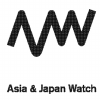The radioactive cesium-137 released by the accident at the Fukushima No. 1 nuclear power plant was about 168.5 times the amount emitted by the Hiroshima atomic bomb, according to documents released on Aug. 26 by the Nuclear and Industrial Safety Agency (NISA).
The radioactive cesium-137 released by the accident at the Fukushima No. 1 nuclear power plant was about 168.5 times the amount emitted by the Hiroshima atomic bomb, according to documents released on Aug. 26 by the Nuclear and Industrial Safety Agency (NISA).
The amount of iodine-131 was 2.5 times that released at Hiroshima, the same documents said.
However, a NISA official said it was not possible to make a "simple comparison of effects" based on the amount of radiation emitted.
"The atomic bomb had effects from heat rays, the bomb blast and neutron rays. There are major differences in characteristics with the nuclear accident," the official said.
The figures were released in response to a request from a Lower House special committee on promoting science and technology innovation.
A comparison of the levels of cesium-137, which has a half-life of about 30 years, showed the Fukushima nuclear accident emitted 15,000 terabecquerels, while the Hiroshima atomic bomb released 89 terabecquerels. A terabecquerel is 1 trillion becquerels.
The figures for the Fukushima nuclear accident were based on an analysis of the reactor cores following the accident that NISA released in June. The figures for the Hiroshima atomic bombing came from a 2000 report by a United Nations scientific committee.

